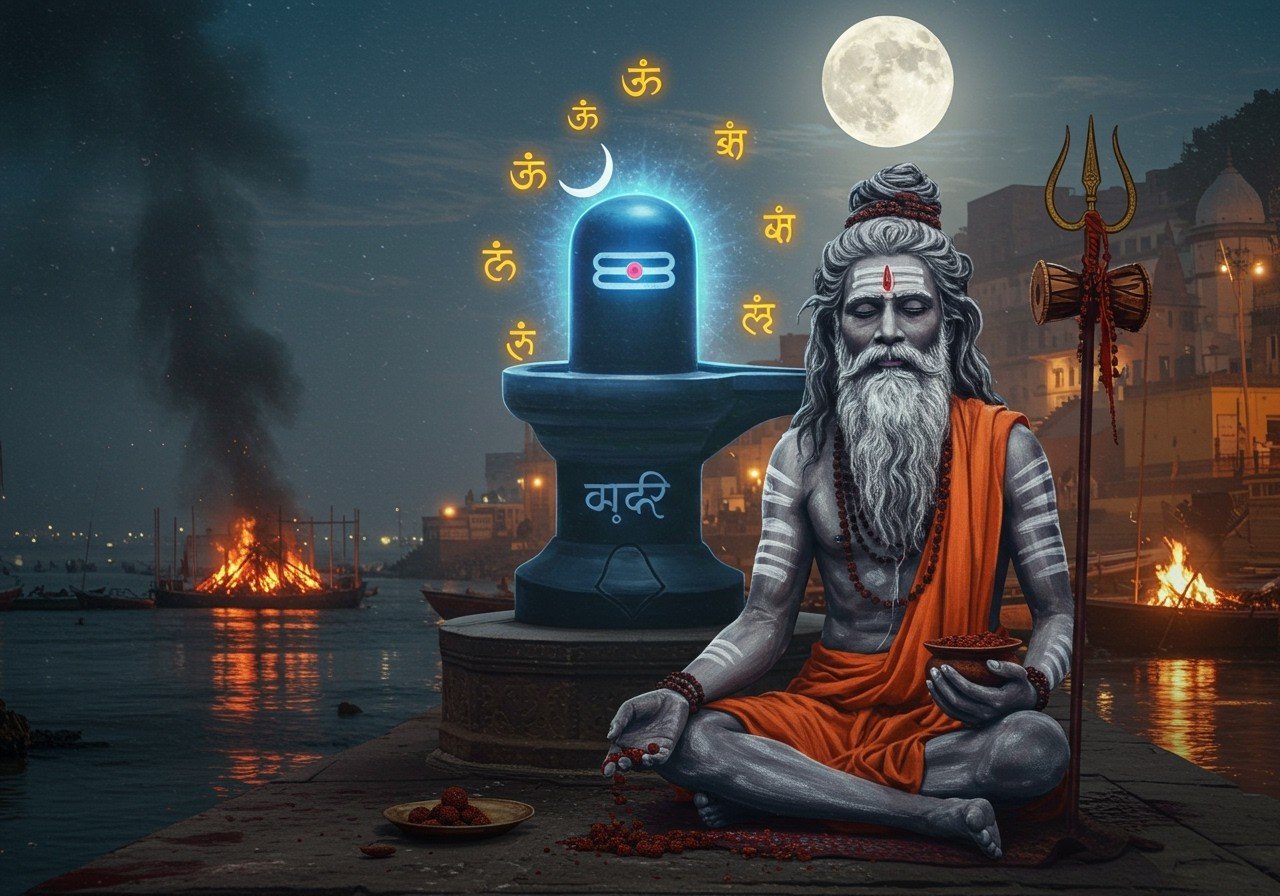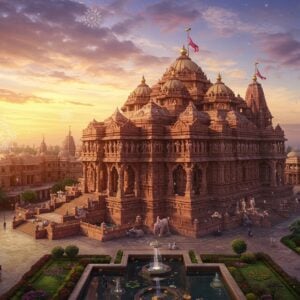
The Aghori sect, a group of ascetic Shaiva sadhus, is shrouded in mystique, known for their unconventional practices and profound symbolism. Their unique way of life represents a deep spiritual journey, and by understanding their origins and philosophy, we can gain insights into their perspective on life, death, and the divine. This exploration will resonate with those who value Indian traditions and seek a deeper understanding of our rich cultural tapestry. Let’s delve into the world of Aghori sadhus and uncover the layers of meaning woven into their existence.
Aghori Philosophy and Beliefs: Exploring the Core Principles
Aghoris are on a quest for moksha, liberation, through the radical acceptance of all aspects of life, even those often deemed taboo – death and decay. Central to their belief system is the concept of oneness in creation, striving to transcend the perceived dualities of purity and impurity. Their practices center around dissolving the ego and attachments to the material world, including the physical body itself. With deep roots in Tantric traditions, Aghoris view the divine as both fierce and benevolent, a perspective reflected in their rituals and their connection to the deeper spiritual realities of existence.
Want to learn more about Hindu philosophy? Delve into the core principles and explore the rich tapestry of Hindu beliefs on our blog: Hindu Philosophy Explained: A Beginner’s Guide.
The Symbolism of Aghori Appearance: Decoding the Unique Look
The distinct appearance of Aghoris is laden with symbolic meaning. The ash they smear on their bodies, taken from cremation grounds, symbolizes detachment from worldly possessions and an unflinching acceptance of mortality. The human skulls and bones they sometimes carry serve as constant reminders of life’s transient nature, powerful tools for meditating on the inevitable reality of death. Their attire, often minimal or unconventional, signifies a rejection of societal norms and material attachments, reflecting their profound inward spiritual journey.
Why Aghoris Walk Backward: Unveiling the Significance
The practice of walking backward is a unique aspect of the Aghori tradition. It symbolizes a conscious effort to move beyond the linear perception of time, representing a journey towards spiritual awakening. By seemingly retracing their steps, they aim to understand the true essence of life’s experiences. This act challenges our conventional understanding of progress, offering a philosophical perspective on how moving beyond societal expectations can lead to deeper self-awareness and insight.
Living in Cremation Grounds: Understanding the Spiritual Significance
Cremation grounds, often places of fear and avoidance, hold deep spiritual significance for Aghoris. They choose to reside in these spaces, recognizing them as powerful intersections of life and death. By confronting mortality head-on, they strive to overcome fear and attachment, deepening their spiritual practice. The cremation ground becomes a place of meditation and transformation, a potent source of spiritual energy that aids their connection to the divine.
Aghori Rituals and Practices: A Glimpse into Their Way of Life
The Aghori lifestyle is characterized by rituals and practices that often challenge conventional norms. Their use of unconventional substances, like alcohol and flesh in certain rituals, is a deliberate challenge to societal taboos, aimed at achieving altered states of consciousness and spiritual insight. Their meditation in cremation grounds and acts of charity and service underscore their belief in the interconnectedness of all beings, further demonstrating their unique spiritual path.
The Profound Symbolism of Aghori Practices
Aghori symbols carry deep meaning, reflecting their core spiritual beliefs and philosophies. These symbols guide them on their path towards liberation.
-
Human Skulls (Kapala)
The human skull, or “kapala,” holds immense significance for Aghoris. It serves as a constant reminder of the impermanence of life, a powerful symbol of the divine transcending the physical realm. Used practically as bowls, the kapala merges the spiritual with the mundane.
Explore our collection of sacred items, including representations of powerful symbols like the kapala, at Poojn.in. We offer a wide variety of authentic ritual items to support your spiritual journey.
-
Cremation Ashes
Cremation ashes are integral to Aghori rituals. By smearing these ashes on their bodies, Aghoris symbolize the transformative power of death and the purification of the soul. It signifies the integration of divine energy into human existence.
-
Lord Shiva
Lord Shiva is the supreme deity in the Aghori tradition. He embodies destruction, transformation, and the cyclical nature of creation and destruction. As the god of yoga and meditation, Shiva represents self-realization and liberation, guiding Aghoris on their spiritual quest.
Find beautifully crafted murtis of Lord Shiva at Poojn.in. Bring the divine presence into your home with our authentically crafted deities.
-
The Corpse
Meditating on a corpse represents a profound spiritual practice for Aghoris. It symbolizes transcending the limitations of the ego and the physical body, a journey towards realizing the Supreme Self. This practice challenges societal norms and delves into the heart of life and death.
Aghori symbolism challenges conventional thought, seeking to break free from societal expectations and transcend dualities. Through their practices, Aghoris strive to attain a non-dualistic state of consciousness, seeking union with Shiva for moksha—liberation from the cycle of birth and death. Explore more about Hindu symbols and their meanings on our blog: Hindu Symbols Explained: Their Meanings and Importance.
Embracing the Aghori Path
The path of the Aghori is unique and profound, rich in symbolism and spiritual significance. Their practices, while unconventional, offer valuable lessons about life, death, and the universe. By embracing symbols like the human skull, cremation ashes, and the figure of Lord Shiva, they seek to transcend earthly limitations and achieve a higher state of consciousness. These powerful symbols remind us of life’s impermanence and the transformative potential within us all. The Aghori path, though challenging, offers a deep and meaningful journey towards ultimate liberation and unity with the divine. Understanding their symbols gives us a glimpse into their quest for moksha, inviting us to reflect on our own paths and beliefs.
FAQs on Aghori Symbolism and Iconography
Why do Aghoris walk backward? Walking backward symbolizes moving away from material desires and societal norms, allowing for deeper focus on their spiritual path.
Why do Aghoris live in cremation grounds? Cremation grounds, places of intense spiritual energy, help Aghoris confront and overcome the fear of death, fostering a deeper connection with the divine.
What is the significance of Aghori clothing? Often minimal or made from simple materials, Aghori clothing signifies detachment from material possessions, emphasizing their spiritual focus.
Why do Aghoris cover themselves with ash? Covering themselves in cremation ash represents acceptance of mortality and the cyclical nature of life and death, symbolizing purification. You can learn more about ritualistic practices and their significance by exploring our other articles, such as Yantras and Yagyas Explained: A Beginner’s Guide.
What do Aghori symbols mean? Symbols like the trident and skull hold deep meaning. The trident represents control over the three worlds, while the skull serves as a reminder of life’s impermanence. Discover a range of authentic tridents and other ritual items at Poojn.in.
How do Aghoris view spirituality? Aghoris view spirituality as a path to enlightenment, embracing all aspects of existence. They believe in oneness with the universe and seek to transcend duality. For those seeking a deeper understanding of sacred symbols, explore our insightful blog post: Rudraksha and Tulsi: Sacred Hindu Symbols Explained.
Why are Aghoris considered mysterious? Their unconventional practices and appearance, which challenge societal norms, often shroud Aghoris in an aura of mystery and intrigue.
What is the role of meditation in Aghori practices? Meditation is essential for Aghoris, facilitating higher consciousness and connection with their inner selves, driving them closer to enlightenment. Enhance your meditation practice with authentic puja items available at Poojn.in. We offer a wide selection of high-quality products to support your spiritual journey.


